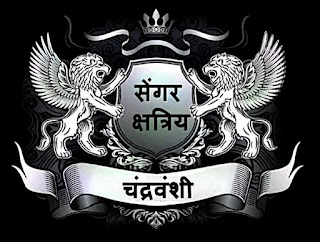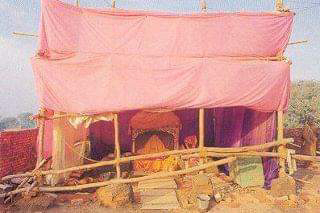जीवन सत्य का विश्लेषण Analysis of Life Truth
जीवन का सत्य मृत्यु है, मृत्यु का सत्य आत्मा की अमरता है, आत्मा का सत्य पुनर्जन्म है
1. जीवन का सत्य: मृत्यु
मृत्यु एक अनिवार्य प्रक्रिया है जो सभी शरीरों के लिए निश्चित है। यह आत्मा के जीवन का अंत नहीं, बल्कि एक शरीर से दूसरे शरीर में जानें का भ्रमण काल माना जाता है। हर जीव को अपने जीवन में एक दिन मृत्यु का सामना करना पड़ता है। यह इसलिए होता है कि भौतिक शरीर का क्षय हो जाने से वह समय विशेष के बाद अनुपयोगी व कष्टदायी हो जाता है ।यह विचार विभिन्न धार्मिक और ईश्वरीय आस्था के विचारों में पाया जाता है, जिसमें कहा गया है कि मृत्यु के बाद आत्मा अमर रहती है। सनातन हिन्दू सिद्धान्त यह कहता है कि मूल आत्मा सबसे सूक्ष्म , फिर सूक्ष्म शरीर है और फिर स्थूल शरीर है ।
जिस तरह फेक्ट्री में एक मोबाईल तैयार होता है वह एक ढांचागत निर्माण , इसी तरह मूल आत्मा जो जीवात्मा का ढांचागत निर्माण है । फिर उस मोबाइल में कंपनी विभिन्न सॉफ्टवेयर डाल कर उसे कार्य योग्य बनाता है , यह आत्मा की प्रक्रिया का दूसरा चरण है । इसके बाद यही आत्मा भौतिक स्वरूप धारण कर शरीर के रूपमें समय विशेष के लिये विचरण करती है । यह भौतिक शरीर धीरे धीरे क्षरण को प्राप्त हो जाता है , जिस तरह एक स्कूटर एक अवधि के बाद खराब होकर समाप्त हो जाता है , उसी प्रकार पृथ्वी पर मौजूद 84 लाख प्रकार के शरीर अपनी अपनी क्षमता से जीवन जी कर मृत्यु को प्राप्त हो जाते हैं । यह एक सतत प्रक्रिया जो पूर्णरूप से ईश्वरीय व्यवस्था पर अविलंबित है ।
2. मृत्यु का सत्य: अमर आत्मा
हिन्दू धर्म में आत्मा को अमर माना गया है। भगवान कृष्ण ने भगवद गीता में स्पष्ट किया है कि शरीर नश्वर होता है, लेकिन आत्मा शाश्वत है। जब किसी शरीर ( व्यक्ति या अन्य जीवात्मा ) की मृत्यु हो जाती है, तो उसकी आत्मा शरीर को छोड़ देती है और एक नए रूप में पुनर्जन्म लेने की प्रक्रिया में प्रवेश करती है। इस प्रकार, मृत्यु केवल एक परिवर्तन की स्थिति है। जैसे पुराने वस्त्र को उतारकर नए वस्त्र को धारण करना ।
सबसे महत्वपूर्ण बात यह है कि मूल आत्मा, स्त्री या पुरुष नहीं बल्कि सूक्ष्म शरीर को धारण करने वाला होता है । जो सूक्ष्म शरीर इस आत्मा में आता है वह स्त्री या पुरुष या अन्य आवश्यकता का होता है , जो उसी प्रकार का स्थूल शरीर बनाता है ।
3. आत्मा का सत्य: पुनर्जन्म
पुनर्जन्म का सिद्धांत यह बताता है कि आत्मा एक नए शरीर में जन्म लेती है। यह चक्र तब तक रहता है जब तक कि आत्मा मोक्ष प्राप्त नहीं कर लेती। पुनर्जन्म के सिद्धांत के अनुसार, व्यक्ति का कर्म उसका अगला जन्म निर्धारित करता है। अच्छे कर्मों का जन्म उच्च शरीरों में होता है जबकि बुरे कर्मों का जन्म निम्न शरीरों में होता है। वहीं जीवन में आने वाला सुख और दुःख भी कर्म विधान पर आधारित होता । इस तरह की मान्यता सनातन हिन्दू धर्म में है ।
इस प्रकार से, जीवन, मृत्यु और पुनर्जन्म से जुड़े हुए हैं ये तीनों कालखण्ड जो निरन्तर चक्र के रूप में चलते हैं हिंदू दर्शन में महत्वपूर्ण स्थान रखते हैं।
इस विश्लेषण में प्रयुक्त शीर्ष 3 आधिकारिक स्रोत :-
1. भगवद गीता -
भगवद गीता हिंदू धर्म का एक प्रमुख ग्रंथ है जिसमें भगवान कृष्ण ने अर्जुन को जीवन, मृत्यु और आत्मा के बारे में गहन ज्ञान दिया है।
2. गरुड़ पुराण-
गरुड़ पुराण हिंदू धर्म के पवित्र ग्रंथों में से एक माना जाता है जो मृत्यु के बाद की यात्रा और आत्मा के समाधान पर विस्तृत जानकारी प्रदान करता है।
3. उपनिषद-
उपनिषद वेदों के अंतिम भाग जो तात्त्विक ज्ञान और ब्रह्मात्मा की अवधारणा पर आधारित हैं, जिसमें पुनर्जन्म और मोक्ष की चर्चा है।
---------------------
Analysis of Life Truth
The truth of life is death, the truth of death is immortality of soul, the truth of soul is reincarnation
1. Truth of Life: Death
Death is an inevitable process which is certain for all bodies. It is not the end of the life of the soul, but it is considered to be the period of travel from one body to another. Every living being has to face death one day in his life. This happens because the physical body decays and becomes useless and painful after a certain time. This idea is found in the ideas of various religious and divine faiths, in which it is said that the soul remains immortal after death. Sanatan Hindu principle says that the original soul is the most subtle, then the subtle body and then the gross body. Just as a mobile is made in a factory, it is a structural construction, similarly the original soul which is the structural construction of the soul. Then the company makes it functional by putting various software in that mobile, this is the second stage of the process of the soul. After this, this soul takes a physical form and roams in the form of a body for a specific period of time. This physical body gradually decays, just as a scooter breaks down after a period of time, similarly the 84 lakh types of bodies present on earth live life according to their capacity and then die. This is a continuous process which is completely dependent on the divine order.
2. Truth of Death: Immortal
Soul In Hinduism, the soul is considered immortal. Lord Krishna has clarified in the Bhagavad Gita that the body is mortal, but the soul is eternal. When a body (person or other living being) dies, its soul leaves the body and enters the process of being reborn in a new form. Thus, death is only a state of change. Like taking off the old clothes and wearing new clothes. The most important thing is that the original soul is not a man or woman but the one who wears the subtle body. The subtle body that comes into this soul is of a female or male or other requirement, which forms the same type of gross body.
3. Truth of Soul: Reincarnation
The theory of reincarnation states that the soul is born in a new body. This cycle lasts until the soul attains salvation. According to the theory of reincarnation, a person's karma determines his next birth. Good deeds are born in higher bodies while bad deeds are born in lower bodies. At the same time, the happiness and sorrow that comes in life is also based on the law of karma. Such a belief is in Sanatan Hinduism. In this way, these three periods are related to life, death and reincarnation, which go on as a continuous cycle and hold an important place in Hindu philosophy.
Top 3 authoritative sources used in this analysis: -
1. Bhagavad Gita - The Bhagavad Gita is a major text of Hinduism in which Lord Krishna has given deep knowledge about life, death and soul to Arjuna.
2. Garuda Purana- Garuda Purana is considered one of the sacred texts of Hinduism which provides detailed information on the journey after death and the resolution of the soul.
3. Upanishads- Upanishads are the last parts of the Vedas which are based on philosophical knowledge and the concept of Brahmatma, which discusses reincarnation and salvation.









टिप्पणियाँ
एक टिप्पणी भेजें